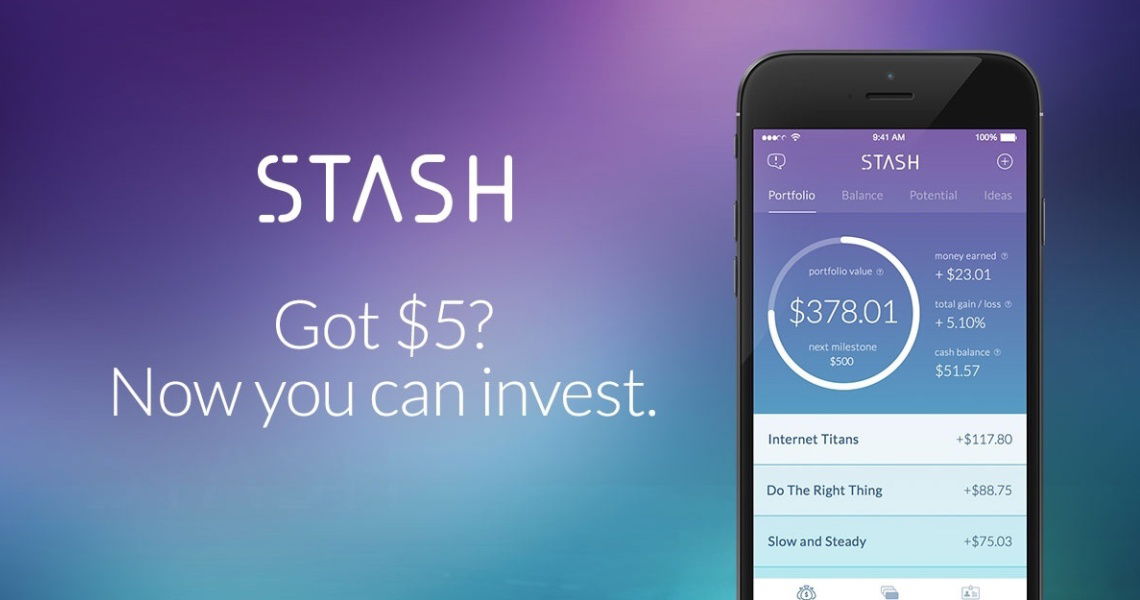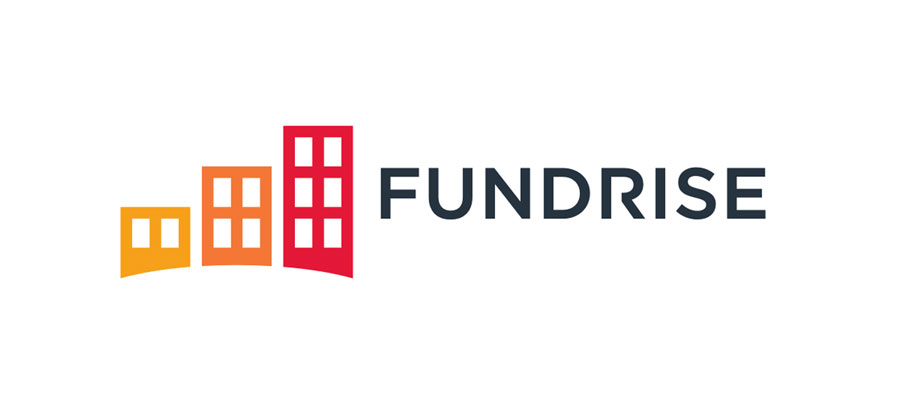If you’re looking for an easy way to start investing, the Stash app might be what you need. Designed for beginners, Stash breaks down barriers like high minimums, confusing terms, and expensive fees that usually keep people out of the market.

In this review, we’ll cover how Stash works, what it costs, who it’s best for, and whether it actually helps you grow your money. If you’re wondering whether Stash is a smart place to start investing, keep reading.
What is Stash?
Stash is a personal finance app built for beginners who want to start investing without feeling overwhelmed. It lets you buy fractional shares of stocks and exchange-traded funds (ETFs), meaning you don’t need hundreds or thousands of dollars to get started. You can start investing with as little as $5.
The platform is designed to be simple. Stash guides you through the basics, helps you choose an investment style, and automates the process so you can build a portfolio over time—even if you’re starting from scratch.
Key Features of the Stash App
Stash is more than just an investing app. It’s an all-in-one platform that includes banking, education, and retirement planning tools.
- Low minimum to start: You can begin investing with just $5.
- Fractional shares: Buy pieces of stocks instead of full shares.
- Automated investing: Set up recurring deposits to grow your account consistently.
- Educational content: The app includes a “Learn” section with bite-sized lessons to help you build financial confidence.
- Stock-back rewards: Use the Stash debit card and earn pieces of stock as rewards on purchases.
- All-in-one dashboard: View your investments, checking account, and retirement savings all in one place.
These features make it easy for beginners to start investing without feeling lost or pressured.
How Stash Makes Investing Easy
Stash is built for people who don’t speak Wall Street. From the moment you sign up, the app asks you about your goals and risk tolerance—whether you’re conservative, moderate, or aggressive—and recommends investments that match.
You can invest manually or automate everything. Choose how much you want to invest and how often—weekly, biweekly, or monthly. The app then allocates your funds based on your preferences, so you don’t have to guess what to buy.
Everything is explained in plain language. You’ll see investment options grouped by themes like “Clean Energy” or “American Innovators,” so you can invest in areas that interest you, even if you don’t know every stock ticker.
Stash Pricing Plans
Stash has three subscription plans: Beginner, Growth, and Stash+. Each comes with different features and a flat monthly fee.
| Plan | Cost | Features Included |
|---|---|---|
| Beginner | $1/month | Personal investment account, debit card, stock-back rewards, and basic education resources. |
| Growth | $3/month | Everything in Beginner, plus tax-advantaged retirement accounts like Traditional and Roth IRAs. |
| Stash+ | $9/month | Everything in Growth, plus custodial accounts for up to two children, a premium metal debit card, and monthly market insights. |
There are no trading fees, but the flat fee can feel steep if you’re starting with a very small balance. For example, paying $1 per month while investing just $5 per month eats up 20% of your contribution.
What You Can Invest in With Stash
Stash gives you access to hundreds of stocks and ETFs. You can buy fractional shares, which means you’re not limited by the price of a full share—great news if you want to invest in big names like Apple or Amazon without spending hundreds.
You can choose investments based on your interests or goals. The app offers pre-built themed portfolios, such as “Women Who Lead” or “Blue Chips,” or you can pick individual investments if you want more control.
The investment mix includes:
- Individual stocks: U.S.-based companies across different sectors.
- ETFs: Diversified funds that hold a basket of stocks or bonds.
- Bonds: Available through certain ETFs, useful for conservative investors.
Stash doesn’t support cryptocurrency or advanced trading tools, which keeps the experience focused on long-term investing rather than short-term speculation.
Is Stash safe to use?
Stash takes security seriously. The app uses 256-bit encryption to protect your personal and financial data. Every time you log in, you’ll be required to enter a PIN or use biometric authentication, depending on your phone’s settings.
Stash is also a registered investment advisor with the U.S. Securities and Exchange Commission. Investments are held by Apex Clearing Corporation, which is a member of FINRA and SIPC. That means your securities are protected up to $500,000 in case of brokerage failure—though that doesn’t protect against market losses.
You’ll need to provide personal details like your Social Security number and banking info when you sign up. This is standard for any investment platform and is required by federal law, including the Patriot Act.
Stash for Retirement (IRAs)
Stash offers two types of retirement accounts: Traditional IRAs and Roth IRAs. These accounts come with tax advantages and are included in the Growth and Stash+ plans.
A Traditional IRA lets you invest pre-tax income, which may lower your taxable income today. A Roth IRA is funded with after-tax money, but your withdrawals in retirement are tax-free if you meet the requirements.
Stash helps you set up recurring contributions, choose a retirement portfolio based on your risk level, and track your progress toward retirement goals—all within the app.
Stash Custodial Accounts for Kids
With the Stash+ plan, you can open a custodial investment account for each of your children. These accounts are owned by the parent or guardian until the child reaches the age of majority—usually 18 or 21, depending on the state.
You can invest money on their behalf in stocks, ETFs, and other assets. There are no contribution limits, and the funds don’t have to be used for education. Once the child takes control of the account, they can use the money however they choose.
This is a simple way to start building generational wealth or teach kids about investing from a young age.
Pros & Cons of Using Stash
Like any investment app, Stash has its strengths and limitations. It’s designed to make investing accessible for beginners, but that simplicity comes with trade-offs. Here’s a quick look at where Stash stands out—and where it might fall short.
Pros
- Low barrier to entry: You can start investing with just $5.
- Beginner-friendly interface: The app is simple and easy to navigate.
- Offers IRAs and custodial accounts: Supports retirement and family investing.
- Educational content: In-app lessons help you build financial knowledge.
- Automatic investing options: Set it and forget it with recurring deposits.
- Stock-back rewards: Earn stock on everyday purchases with the Stash debit card.
Cons
- Monthly fees hit small accounts hard: Paying $1/month can feel steep if you’re only investing a little.
- Limited investment types: No access to cryptocurrency or advanced trading tools.
- Not ideal for experienced investors: Lack of customization may frustrate active traders.
Who should use the Stash app?
Stash is best for people who are new to investing and want a guided experience. If you’ve never invested before—or if the idea of reading stock charts makes your eyes glaze over—Stash can help you get started with minimal stress.
It’s also a good fit for busy people who want to automate their investing and learn as they go. You won’t get the advanced tools that come with traditional brokerages, but you’ll get an experience designed to be approachable, not intimidating.
If you’re already confident picking individual stocks, or you want advanced tax features like tax-loss harvesting, you’ll probably outgrow Stash quickly.
Final Verdict
Stash is a great entry point for beginner investors who want a simple, no-pressure way to start building wealth. The platform makes investing accessible, offers educational content, and wraps everything into an easy-to-use app.
However, the flat monthly fee can eat into your returns if you’re starting with a very small amount. If you plan to invest consistently and build up your balance, the value improves over time.
For anyone just getting started with investing—or looking for a low-effort way to stay consistent—Stash is worth considering. It won’t do everything, but it does exactly what many beginners need.




